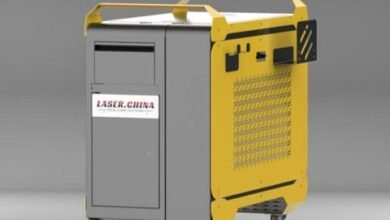
As the intermediary between digital and physical systems, edge devices are essential to the edge computing ecosystem. Unlocking the full potential of this technology requires an understanding of its relevance and the seamless integration it provides with edge computing platforms.
Now let’s explore the nature of edge devices and how they are intricately related to edge computing systems.
1. Understanding Edge Devices:
A. Definition and Purpose:
From sensors and actuators to smartphones and Internet of Things gadgets, facet devices cover a huge range of hardware components. Gathering, processing, and transmitting records from the community’s aspect—in the direction of the source of facts generation—is their predominant duty.
B. Types of Edge Devices:
There are several types of area gadgets designed for particular sectors and use instances. These incorporate, however, are not limited to, wearable technology, industrial sensors, clever appliances, self-reliant automobiles, and security cameras. Every type has a wonderful function in accumulating and transmitting statistics in real time.
C. Role in Edge Computing:
By processing records domestically, area gadgets, because the front-line records gatherers, reduce the weight on centralized cloud servers. This localized processing improves performance, lowers latency, and permits real-time selection-making—all of which are vital in situations in which activate reactions are vital.
2. Connectivity in Edge Devices:
A. Wired Connectivity:
For immovable facet devices like industrial machines and fixed surveillance structures, stressed connections—such as Ethernet and USB—offer reliable and rapid facts transmission. Ideal for applications in which latency is a challenge, these connections assure constant information drift with decreased latency.
Additionally, cloud servers serve as centralized repositories for storing and analyzing data collected from these edge devices, enabling seamless integration with edge computing systems and facilitating real-time decision-making.
B. Wireless Connectivity:
Mobile and distant facet devices can communicate seamlessly way to wireless technologies including Wi-Fi, Bluetooth, Zigbee, and cell networks. Wireless connectivity gives versatility and scalability, allowing part gadgets to feature in quite a few conditions, be it a network of clever wearables or a fleet of shipping drones.
C. Protocols and Standards:
Interoperability and information transmission between aspect gadgets and area computing structures are made less difficult using standardized communication protocols like MQTT, CoAP, and HTTP. Following those recommendations promotes a harmonious atmosphere of networked devices by guaranteeing compatibility and streamlining the mixing manner.
3. Integration with Edge Computing Systems:
A. Edge Gateway Deployment:
Edge gateways act as a bridge between centralized facet computing infrastructure and edge gadgets. They gather facts from numerous part devices, preprocess them if wished, and send them to the threshold computing gadget so that they can be tested and used further. By enforcing facet gateways, machine scalability is progressed and records float is optimized.
B. Edge-to-Cloud Orchestration:
By the use of orchestration frameworks that connect the edge to the cloud, such as Kubernetes and Docker Swarm, firms can without difficulty scale and control area computing deployments in dispersed places. Within the bigger edge computing structure, these frameworks ensure the seamless operation of aspect gadgets through automating aid allocation, workload distribution, and fault tolerance.
C. Security and Privacy Measures:
To defend information transferred among part devices and edge computing systems, robust security measures along with encryption, and authentication, and get the right of entry to manage have to be put in the vicinity. Organizations might also reduce cybersecurity risks and defend exclusive facts from alteration or unauthorized access by following legal standards and enterprise great practices.
4. Edge Device Management and Maintenance:
A. Remote Management Solutions:
Platforms for far-off tool management make it less complicated to centrally monitor, configure, and maintain edge gadgets that can be spread out over several geographic regions. With the help of those technologies, directors can also reduce downtime and running costs by remotely diagnosing troubles, deploying updates, and guaranteeing top performance without the want for physical interplay.
B. Predictive Maintenance Techniques:
Organizations can proactively stumble on feasible malfunctions or irregularities in part gadgets by making use of gadgets gaining knowledge of models and predictive maintenance algorithms, that are based on statistics developments. Organizations can improve operational performance by way of prolonging system lifespans, optimizing useful resource consumption, and improving device dependability by proactively addressing maintenance worries.
C. Edge Device Lifecycle Management:
Adopting sturdy lifecycle management strategies guarantees that edge tool retirement, provisioning, and deployment go smoothly all through their beneficial lives. Organizations must set up standardized methods and regulations to manipulate tool workflows more efficiently and in compliance with guidelines, from initial provisioning and setup to quit-of-lifestyles decommissioning.
5. Edge Device Power Management Strategies:
A. Energy-Efficient Design Conedgerations:
Optimized firmware/software program algorithms, low-energy CPUs, and strength-efficient additives are incorporated into area device designs to lessen energy consumption without sacrificing functionality. By extending battery lifestyles, reducing working prices, and lessening environmental impact, those design factors improve the sustainability and environmental friendliness of edge gadgets.
B. Dynamic Power Management Techniques:
By making use of techniques like voltage scaling, frequency scaling, and sleep modes, area devices may also alter their electricity intake dynamically in reaction to changes in workload needs and environmental factors. Organizations may additionally maximize device autonomy, manipulate electricity consumption, and enhance normal machine reliability using controlling energy usage intelligently.
C. Renewable Energy Integration:
The incorporation of sustainable energy assets, such as wind turbines, solar panels, and kinetic power harvesters, into aspect tool deployments lessens dependency on traditional power grids. Organizations can also save operational expenses, lessen energy interruptions, and assist create a more robust, greener infrastructure through utilising renewable strength at the edge.
6. Edge Device Edge Computing Interoperability Standards:
A. Interoperability Challenges and Solutions:
Respecting defined data codecs, interface specifications, and conversation protocols is essential to deal with interoperability troubles among facet computing structures and gadgets. By creating uniform standards for interoperability, plug-and-play compatibility, and interoperability are made viable throughout disparate area tool ecosystems, facilitating smooth integration, records sharing, and cooperation.
B. Open Standards and Consortia Initiatives:
Engaging in open requirements improvement initiatives and consortiums like EdgeX Foundry and the Industrial Internet Consortium (IIC) encourages the adoption of like-minded technologies and architectures for edge computing implementations. Organizations can promote lengthy-term interoperability, speed up marketplace adoption, and foster innovation by working with industry players and assisting in standardization tasks.
C. Role of Edge Device Manufacturers and Vendors:
By following defined requirements, putting open APIs into exercise, and supporting enterprise activities for smooth integration with edge computing structures, edge device producers and vendors can considerably contribute to the development of interoperability.
Manufacturers may additionally increase environment growth, enhance purchaser happiness, and set themselves apart within the crowded marketplace by giving interoperability top priority in the course of the product layout and development method.
Conclusion
Fundamentally, part gadgets are the foundation of area computing, allowing actual-time data processing at the edge of the network and bridging the gap between the virtual and physical domains.
To fully utilize this progressive era, it is critical to realize their characteristic, available connectivity, and interaction with aspect computing structures.
In the technology of allotted computing, corporations may also reap previously unheard-of tiers of performance, agility, and innovation by way of embracing edge devices and utilizing their skills.

